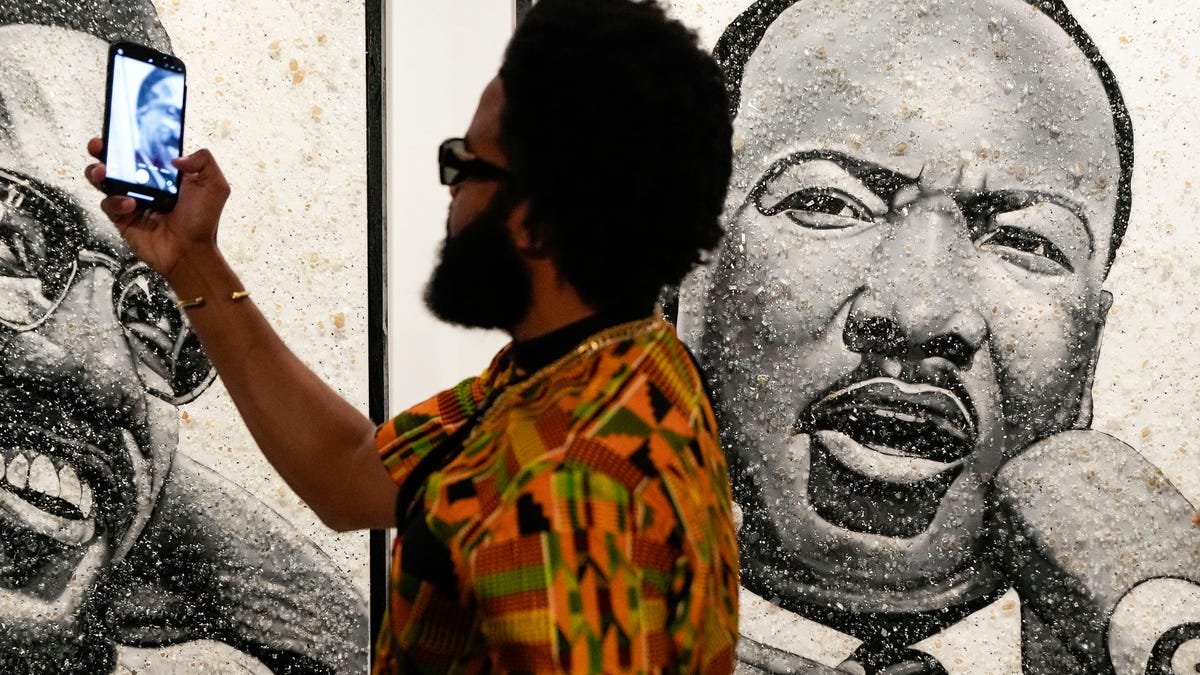Two longtime painters recently told me how joyful their studio practices had become in their 40s once they took their minds off their ambitions, stopped trying to impress anyone, and just let the paintings paint themselves. I’ve been dabbling with working that way myself, so I was thrilled to find the memorable demonstrations of unburdened artistic spontaneity that are scattered in “None Whatsoever: Zen Paintings from the Gitter-Yelen Collection” at the Japan Society.
The centerpiece of the show is a room full of works by Hakuin Ekaku (1686-1769), the Zen Buddhist priest credited with originating the practice of zenga, a cartoonlike approach to ink painting that mixes short bursts of calligraphy with figures from Chinese mythology and Buddhist history. His paintings are bracketed by four centuries of works by his predecessors and followers, all Zen practitioners using ink painting to spread their doctrines, with a few secular 20th-century artists thrown in, and a scattering of meditation cushions for visitors who want to really sink into the work. But as delightful as many of those pieces are, as paintings, none quite has the self-propelled perfection of Hakuin’s “Giant Daruma.”
That one contains nothing but what’s necessary to communicate the ideas in question — in this case the conventional attributes of Daruma, which are long ears, broad forehead, an expression of profound concentration bordering on anger, and a beard. The result is a line with no mistakes: Even as it falls exactly where it needs to be to make the picture, it quivers with a vitality that’s compelling in its own right.
Of course even Hakuin doesn’t get it right every time. In one early effort, Kannon, the bodhisattva of compassion, floats on colored flowers under a group of brisk Chinese characters wearing an elegant robe drawn with an already masterly line. The painting as a whole, pretty as it is, is fussy and overwrought. It contains more visual information than it needs.
Simply cutting down on visual information isn’t enough to make a painting sing, either. In the 17th century, Isshi Bunshu painted a portrait of Daruma, or Bodhidharma, the Indian monk considered the founder of what became Zen, consisting of almost nothing but the great man’s robe in silhouette. But a precise little nose interrupts the robe’s simplicity, and the manifest caution with which the robe itself was painted — in several separate strokes — give it a quivering kind of fragility. That fragility is appealing, but it shows effort, not ease.
Ito Jakuchu’s late 18th-century Daruma nearly has it all: A vast, empty forehead, giant googly eyes, a gorgeous brushstroke fade to signify thinning hair and a chin that evokes a rear end. But you can see that Ito was being careful, too: The unmistakable tremor of the stroke across his forehead suggests a slow and measured process behind this particular graphic image. There’s nothing wrong with that — it’s still a spectacular drawing — but it doesn’t exactly illustrate the phrase popularized by Allen Ginsberg, “first thought, best thought.”
Now go back to Hakuin’s “Giant Daruma. ”By letting go of the impulse to fill in interesting details, Hakuin made room for his unconscious mind to do it. And the unconscious mind often does it better. Daruma’s robe, in Hakuin’s portrayal, is a stylized version of the Japanese character for “heart,” which echoes the calligraphy above him. (It says, “Point directly to the human heart, see your nature, and become Buddha.”) Its roller-coaster-like ups and downs illustrate the turbulent nature of dualistic life.
The thin, gray quality of the old man’s face suggest that even a Zen master’s identity is evanescent, while the dark intensity of his eyes captures the timeless persistence of his understanding. A series of feathery, beautiful strokes come together at the bottom to form a beard, making the off-white paper look whiter where it flashes between them. Daruma just appears out of nowhere, as if he were always there.
It may be worth noting that Hakuin, who’s also celebrated for single-handedly reviving his particular sect of Zen after years of decline, and introducing such classic koans as “what is the sound of one hand clapping,” didn’t really start painting till his late 40s.
None Whatsoever: Zen Paintings from the Gitter-Yelen Collection
Through June 16, Japan Society, 333 East 47th Street, Manhattan, japansociety.org; (212) 832-1155.






